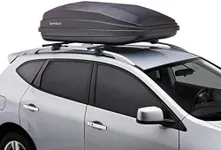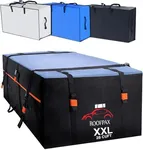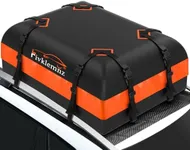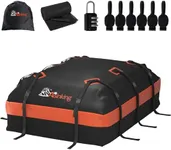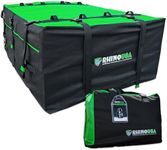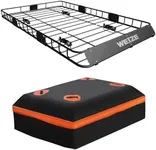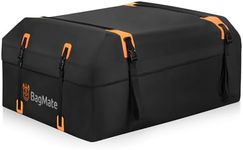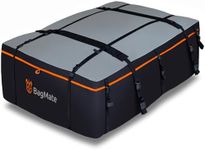Buying Guide for the Best Car Top Cargo Carriers
Choosing the right car-top cargo carrier can make your travels more convenient and enjoyable by providing extra storage space for your gear. When selecting a cargo carrier, it's important to consider several key specifications to ensure it meets your needs and fits your vehicle properly. Here are the main factors to consider and how to navigate them to find the best fit for you.CapacityCapacity refers to the amount of storage space the cargo carrier provides, usually measured in cubic feet. This spec is important because it determines how much gear you can carry. Smaller carriers (8-12 cubic feet) are suitable for light packers or short trips, while medium carriers (12-18 cubic feet) are ideal for families or longer trips. Larger carriers (18+ cubic feet) are best for those who need to transport a lot of gear or bulky items. Consider your typical travel needs and the amount of luggage you usually carry to choose the right capacity.
DimensionsDimensions refer to the length, width, and height of the cargo carrier. This spec is crucial because it affects how well the carrier fits on your vehicle and how much it can hold. Measure your vehicle's roof space to ensure the carrier will fit without overhanging or obstructing any parts of your car. Also, consider the height of the carrier if you need to park in garages or low-clearance areas. Choose dimensions that provide enough space for your gear while fitting comfortably on your vehicle.
Weight LimitThe weight limit is the maximum amount of weight the cargo carrier can safely hold. This spec is important to prevent overloading, which can affect your vehicle's handling and safety. Light-duty carriers typically support up to 100 pounds, while heavy-duty models can handle 150 pounds or more. Consider the weight of the items you plan to carry and ensure the carrier's weight limit is sufficient. Always check your vehicle's roof weight capacity as well to avoid exceeding it.
MaterialCargo carriers are made from various materials, including hard-shell plastic, soft-shell fabric, and metal. The material affects the carrier's durability, weather resistance, and security. Hard-shell carriers offer the best protection against the elements and theft but are heavier and more expensive. Soft-shell carriers are lighter, more affordable, and easier to store but may not provide as much protection. Metal carriers are durable and can carry heavy loads but may require additional weatherproofing. Choose a material based on your priorities for protection, weight, and budget.
Mounting SystemThe mounting system refers to how the cargo carrier attaches to your vehicle's roof. This spec is important for ease of installation and stability. Common mounting systems include roof racks, crossbars, and factory-installed rails. Some carriers come with universal mounting systems that fit most vehicles, while others require specific types of roof racks. Ensure the carrier's mounting system is compatible with your vehicle and easy to install. If you frequently remove and reattach the carrier, look for a system that offers quick and secure attachment.
AerodynamicsAerodynamics refers to how well the cargo carrier reduces air resistance while driving. This spec is important for fuel efficiency and reducing wind noise. Aerodynamic carriers have a sleek, streamlined design that minimizes drag, which can help improve gas mileage and reduce noise. If you plan to use the carrier frequently or on long trips, an aerodynamic design can save you money on fuel and make your drive more pleasant. Consider the shape and design of the carrier to ensure it offers good aerodynamics.
Security FeaturesSecurity features include locks and other mechanisms that protect your gear from theft. This spec is important for peace of mind, especially if you leave your vehicle unattended. Look for carriers with built-in locks or the ability to add your own padlocks. Some models also offer reinforced materials or tamper-resistant designs. Choose a carrier with security features that match your level of concern and the value of the items you plan to transport.


